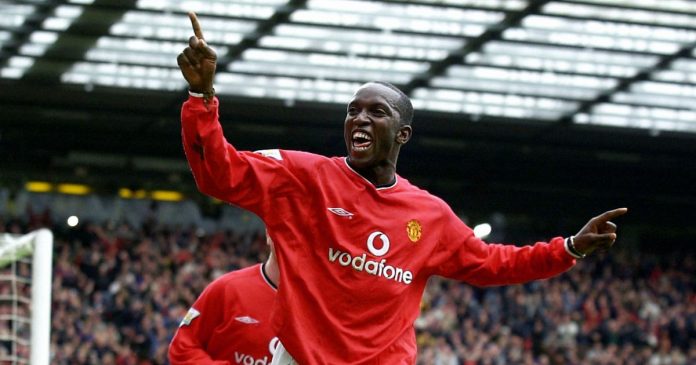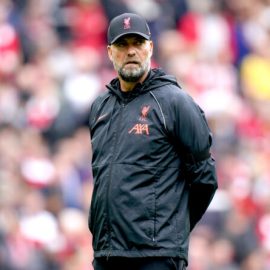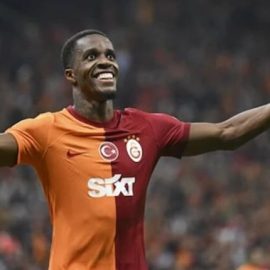Image courtesy of Pure Sports Medicine.
The recent debate on player burnout and the need (or lack thereof) for a winter break sparked a flurry of interested in the workload of Premier League players. Two domestic competitions, congested spell of fixtures over Christmas and international football to boot.
Does playing consistently at this level put players under a greater risk of injury, or are they, as Middlesbrough chairman Steve Gibson says, lucky to be playing football professionally all year long?
In a BBC Online article dated 01 November 2007 by Simon Austin, “Too Much Sport,” PFA Chief, Mr. Gordon Taylor, entered the debate about a winter break.
“Taylor wants the introduction of a winter break and believes a ‘football passport’, which stipulates the maximum number of games players can play, might work.”
“The biggest problem is probably with the elite, who need the most looking after.”
“Think of the number of international players who have had foot injuries, such as Emile Heskey, Wayne Rooney and David Beckham, or of John Terry playing with broken bones and having cortisone injections.”
“It’s up to the authorities and administrators to make it as safe as they can. Some players can clock up 50, 60 games a season and it’s obviously going to take a toll.
“What’s disappointed me for a long time is that while our club football is ruling the roost, international football is taking a backward step.”
Perhaps we need an expert medical opinion to analyze the rigors that players face for club and country? Pure Sports Medicine of London specializes in the treatment of professional athletes, along with the rest of us.
“Whether you’re a Sunday morning golfer or an Olympian, Pure has the expertise, experience and determination to deal with your sports injuries and work with you through the entire rehabilitation process.”
Pure Sports has clients from a wide selection of professional football teams. For example, Charlton Football Club and the Fulham Football Club, along with Charlton Athletic, Crystal Palace, Manchester City, Middlesbrough, Newcastle, Portsmouth, and Sheffield United, respectively.
Soccerlens is pleased to welcome Doctor Craig Panther, Sports Specialist. Doctor Panther has over ten years of expertise in sports medicine and trauma. He was the team doctor of Auckland City FC, Auckland University Rugby, along with the French “America’s Cup” yachting team. Presently, Dr. Panther is the Medical Officer for the Fulham Football Club. His areas of primary specialization are hand, wrist, along with lower limb and compartment syndromes.
Dr. Panther, please accept a warm welcome to Soccerlens.
Could you please describe your responsibilities as the Medical Officer at the Fulham Football Club?
Looking after the professional and academy players (and staff): Day-to-day management of injuries, matchday & pitchside attendance, organising imaging, drug testing, insurance matters, cardiac screening, injury prevention, continuing education.
Mr. Taylor and others want a winter break in the Premiership. In your opinion, what would be the potential benefits and/or any liabilities for the players under your care?
Benefits would be in allowing tissues to recover and easing pressure on injured players.
Liabilities would be potential difficulty (if the break were too long) in maintaining cardiovascular fitness over that period and having to go through another ‘pre-season’ before the resumption. Would result in a shorter break during the summer months or further congestion during the season if the number of fixtures remains the same.
What are the effects of modern day football on the human body? For example, how long does it take for an athlete to recover from 90 minutes of professional football?
Well-trained athletes will recover within 36h. Apart from injuries, effects are largely carbohydrate depletion, dehydration and protein breakdown. These can be minimised by correct attention to nutrition & hydration before, during and after play, as well as sensible recovery strategies such as warming down, recovery garments and light recovery exercise the day after the match.
With a focus on injuries caused by over-exertion or too many domestic and international fixtures, which are the most common types of football injuries that you diagnose and treat?
Stress fractures (mainly of the foot), groin injuries, low back injuries.
Frequent jet travel and the modern day footballer are synonymous. For example, Steven Gerrard of Liverpool FC and the English National Team:
13 October: Estonia at home for Euro 2008 qualification.
17 October: Russia away for Euro 2008 qualification.
20 October: Everton away for the BPL.
24 October: Besiktas away for the UEFA Champions League.
28 October: Arsenal at home for the BPL.
31 October: Cardiff at home for the Carling Cup.
He competed in four different competitions and six games over a span of 19 days. Are we asking too much from elite players, or do they have extraordinary regenerative capacities to handle such rigorous physical and mental demands?
Travel, particularly across multiple time zones, creates its own stress both mentally and physiologically.
Most players don’t have extra-ordinary regenerative capacities. Some certainly seem to recover more quickly and there’s probably a genetic basis to this. There is possibly a certain amount of self-selection in that many of those who are injury-prone tend to be found out in the Academies and perhaps don’t make it to the top.
Modern advances in exercise science (periodisation & specificity of training, nutrition, hydration) and its application to football have improved the player’s ability to cope with the demands placed on them.
Dr. Panther, thank you very much for your commentaries and contribution to Soccerlens. All the best wishes to you, Pure Sports Medicine, and the Fulham Football Club.
Soccerlens would like to extend a special thanks to Mr. Stuart Skinner of Phil Hall Associates for his kind assistance with this interview.
Steve Amoia is the author and editor of World Football Commentaries.
Also read: Does the Premier League need a Winter break?
Add Sportslens to your Google News Feed!






